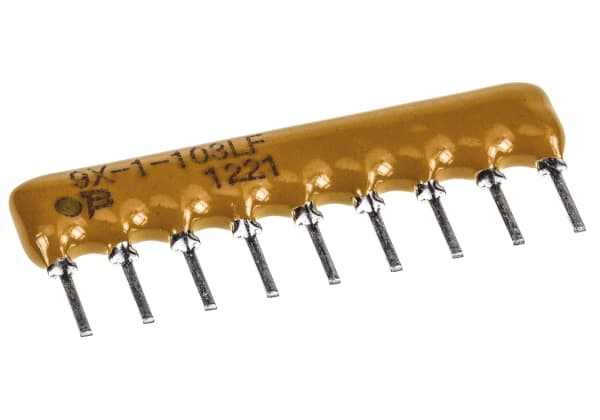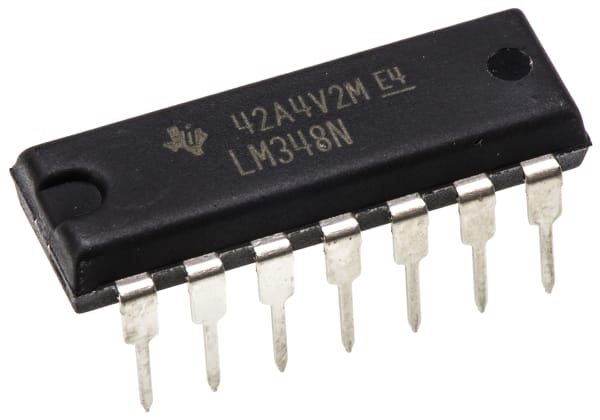- Published 30 Oct 2023
- Last Modified 29 Jan 2024
- 5 min
How Do Piezo Buzzers Work?
A comprehensive guide to piezo buzzers. Take a deep dive into the piezoelectric effect with circuit-building guides, component lists, and comparisons with electromagnetic buzzers.

Reviewed by Peter Kendall, Technical Support Engineer (August 2023)
Piezo buzzers are simple electrical components designed to produce sound. They work by using piezoelectric materials that deform when an alternating voltage is applied across them. The voltage makes the material vibrate rapidly, producing sound.
Piezoelectric buzzers are low-cost, useful audio sounders found in a wide array of applications. Most devices that require a simple audible output use either a piezoelectric or magnetic buzzer.
The Piezoelectric Effect
The piezoelectric effect was a major scientific breakthrough in 1880. The Curie brothers, Jacque and Pierre, discovered that certain materials produce electric charge when placed under mechanical strain. Materials that exhibit this property are called piezoelectric materials.
Piezoelectric buzzers use this property to produce sound. Instead of producing an electric charge by applying force, the buzzer does the opposite. A voltage is applied to the material to produce movement. An alternating voltage will repeatedly deform and reform the material, creating sound waves.
This type of buzzer contains a ceramic disc with electrodes attached to both sides, inside a protective housing or case.
What is the Difference Between Piezoelectric Buzzers and Magnetic Buzzers?

The difference between piezo buzzers and magnetic buzzers is the method they use to produce sound. Magnetic buzzers use alternating current inside a magnetic field. Piezo buzzers contain materials that change shape when alternating voltage is present.
Magnetic buzzers use the same principle as loudspeakers. Magnetic fields are induced when electric current flows through a coil of wire. An alternating current in the coil makes the direction of the magnetic field change direction repeatedly. When combined with a permanent magnetic field (produced by a magnetic element in the buzzer), this causes the coil to vibrate rapidly, creating the sound.
How to Make a Simple Buzzer Circuit
A simple buzzer circuit is easy to make and does not require many components or specialist knowledge. A magnetic buzzer simply needs a power source, a switch, and the buzzer itself. For a piezoelectric ceramic buzzer, the circuit requires a mechanism to cause the buzzer to cycle on and off. This repeated motion is needed to produce the sound.
The minimum components are:
- Battery
- Piezoelectric buzzer
- Transistor
- Resistors (see circuit diagram)
- Switch
- Connecting wires
Piezoelectric Buzzer Circuit Diagram
Use this simple piezoelectric buzzer circuit diagram to select and connect the right components for your circuit.
Breadboards are useful for these kinds of projects because they allow quick and easy component connections. Refer to the circuit diagram below to build your buzzer circuit.
Piezoelectric Buzzer Driver
Magnetic buzzers have an inbuilt mechanism for alternating diaphragm movement. When current flows through the coil, it moves and ‘breaks’ the connection, causing it to return to the starting position and the cycle begins again.
Piezoelectric buzzers require the same alternating motion to produce sound vibrations in the air. The piezo sounder uses a specific circuit design to achieve this effect. This circuit is known as a piezoelectric buzzer driver
When the driver circuit is turned on, the voltage across the piezo element causes it to move but also grounds the transistor base. This switches off the transistor and piezo buzzer. When they return to their original position, the cycle instantly starts again.
Uses of Electric Buzzer

Electric buzzers can be used in any application that requires audio output, including alarms, phones, earbuds, and ultrasonic pest deterrents. The sound does not need to be considered a ‘buzz’: a range of tones and notes can be generated.
Depending on the circuit design, the buzzer can generate a single, short sound or a long noise until the circuit is reset. This flexibility results in a vast array of applications such as:
- Alarms
- Timers
- Smoke detectors
- Household appliances such as microwaves and washing machines
- Safety indicators such as vehicle-reversing alerts
- Doorbells
Piezoelectric Buzzer Specifications
When considering specifications for a piezoelectric buzzer, consider the following key features:
- Voltage: The operating voltages for piezoelectric ceramic buzzers can vary from 3-250V
- Current: Piezo devices typically draw very low currents, under 15mA
- Sound pressure level (SPL): This will indicate the volume level the piezoelectric sounder can produce, usually between 60-115dB
- Frequency: This determines the pitch of the tone produced. Higher frequencies produce higher-pitched sounds
- Size: Check the buzzer’s diameter and depth to ensure it suits your application
- Connections: Choose a buzzer that works with the type of circuit you are building
- Mounting: Think about where you are installing the buzzers and the type of mounting that works best in that environment
At RS, we’re passionate about equipping engineers in 80 countries around the world. The 60,000 packages we ship each day include high-quality, reliable electrical components that allow you to construct the circuit you need. We use decades of experience to select the best products, allowing you to concentrate on your work. Check out our full range of sounders, buzzers and microphone components today.
Related Articles
Related links
- Piezo Buzzers
- RS PRO 96dB Panel Mount Continuous Internal Piezo Buzzer 1.5V dc Min, 20V dc Max
- Piezoelectric Miniature Speakers
- Idec Cable Mount Piezo Buzzer
- PUI Audio 90dB(A) Flange Mount Continuous Internal Piezo Buzzer 3V dc Min, 28V dc Max
- PUI Audio 106dB(A) Flange Mount Continuous Internal Piezo Buzzer 1.5V dc Min, 12V dc Max
- RS PRO Lead Wire Piezo Buzzer, 35 (Dia.) x 0.51mm
- RS PRO 90dB Through Hole Continuous External Piezo Buzzer 1V ac Min, 30V ac Max


